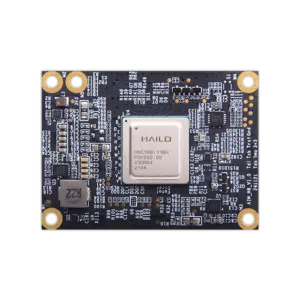Geniatech AI Accelerators: High-Performance, Low-Power Solutions for Deep Learning
Geniatech AI Accelerators: High-Performance, Low-Power Solutions for Deep Learning
Blog Article
Seamless AI Integration with Geniatech's M.2 and B2B AI Accelerator Options
Artificial intelligence (AI) is evolving at a pace that difficulties industries to adopt more efficient and strong solutions. Among the cornerstones of this advancement are AI ai module designed to deal with complex strong learning tasks without consuming extortionate power. High-performance, low-power AI accelerators are paving the way for better technologies to infiltrate varied industries, from healthcare and fund to automotive and side computing.

The Need for High-Performance, Low-Power AI Solutions
Strong learning versions are more powerful than ever, but in addition they demand substantial computational resources. Instruction and operating these versions require electronics that may process immense amounts of information efficiently. But, conventional processors often flunk in conference the energy performance and speed needed for real-time AI applications. That hole has resulted in a surge in demand for AI accelerators that guarantee good performance while being energy-conscious.
For industries counting on effective AI arrangement, these accelerators symbolize a critical solution. Units and techniques presenting these components may offer instantaneous insights without draining energy reserves, enabling seamless integration in to resource-constrained environments. This change toward managing computational energy with energy efficiency is driving deeper usage across cloud, on-premises, and edge processing infrastructures.
Critical Features That Define Modern AI Accelerators
Power Performance Without Reducing Energy
Low-power use is really a trait that models these accelerators apart. They let systems to operate for longer times, specially in mobile or edge applications where power sources are limited. By optimizing energy usage, these accelerators are not just green but also cost-effective for businesses.
Enhanced for AI Workloads
Unlike old-fashioned processors, AI accelerators are designed to generally meet the specific needs of heavy understanding workloads. Including responsibilities like thing detection, language control, and real-time analytics. Many of these accelerators function extremely parallel architectures, which help parallel control of knowledge to execute tasks faster and with higher precision.
Scalability for Any Implementation
Scalability is still another standout feature of those solutions. Whether you're deploying AI versions in substantial data centers or developing them into small side products, these accelerators are created to handle various computational needs without reducing efficiency.
Small Models for Diverse Purposes
Developments in chip design have produced AI accelerators compact without reducing their power. This opens pathways for integration into units across industries like healthcare (wearable devices), retail (smart kiosks), and automotive (self-driving vehicles). This usefulness pushes use across industries.
Real-World Programs Operating Ownership
Healthcare
From detecting conditions to managing individual information, AI in healthcare requires strong computational power. AI accelerators support real-time information analysis, allowing quicker and more appropriate diagnostics while conserving process energy.
Finance
Considering purchase data and sensing anomalies for scam detection is computationally intensive. AI accelerators empower financial institutions to run serious learning versions faster, enhancing the pace and precision of these security systems.
Clever Cities

For smart towns deploying AI for security, traffic administration, and energy conservation, AI accelerators give the mandatory energy and efficiency. Their capacity to work on side devices assures real-time data running for increased downtown management.
Autonomous Vehicles
Self-driving engineering is probably one of the very most challenging applications of deep learning. AI accelerators give you the computational power needed seriously to process information from cameras and receptors in real-time, ensuring vehicles make safe and reasonable decisions.
The Base Line
The shift toward high-performance, low-power solutions symbolizes the continuing future of heavy understanding advancements. These accelerators allow industries to drive the limits of AI integration while ensuring power efficiency and working scalability. Their usefulness across sectors underscores their affect as equally enablers of smarter systems and people of cost-effective solutions.
By conference the wants of real-time analytics and edge research, these accelerators are adjusting the AI landscape, which makes it a reachable, sustainable, and transformational technology for industries over the globe. If your focus is on efficient AI implementation, low-power AI accelerators are an essential portion in this continuous creativity revolution. Report this page